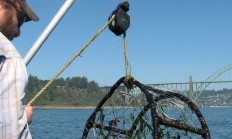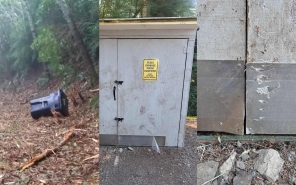
Search myodfw.com

Mouth calls, also known as diaphragm calls, can seem intimidating but they have some advantages over other kinds of calls. Mouth calls are popular with Oregon turkey hunters because: They're easier to keep dry during wet, spring seasons than are box or slate calls. Since the the call is in your mouth, you can call in a turkey without moving and possible spooking the bird. With practice, they can produce very realistic turkey sounds. Parts of a mouth call There are four parts to a mouth call. Starting at the outside of the call there’s: The tape. The tape stops




Commission meets Aug. 15 in Salem
SALEM, Ore.—Oregon's Fish and Wildlife Commission will meet Friday, Aug. 15 in Salem at ODFW Headquarters, 4034 Fairview Industrial Drive SE. The meeting will be livestreamed from the Commission page. See the agenda here. (Note that Commission materials have moved to myodfw.com while ODFW's older…





The fall bear eat-a-thon is on – keep bears, people and pets safe by securing trash
A black bear tried its best to get into a Neskowin homeowner's bear resistant trash can. The homeowner then built a small shed to enclose the trash can. The persistent bear left its prints and claw marks on the shed but did not succeed in breaking into it. This resident understands the need to be…

Youth hunters can register now for free pheasant hunting events
Events in Coquille, Central Point, Monmouth, Eugene, Irrigon, John Day, Klamath Falls, La Grande, Madras, Portland, Tygh Valley SALEM, Ore.—Youth hunters (age 17 and under) who will have completed hunter education by the time of the event can sign up now for ODFW's free pheasant hunts happening…

Ripple effects from Redfish Rocks Marine Reserve: New economic analysis reveals job and income generation
NEWPORT, Ore. – New research from Oregon's south coast highlights the positive economic impact of science and tourism within Redfish Rocks Marine Reserve. The study quantifies the number of jobs supported and income generated by these activities, providing important data for the local Port Orford…


Jackson Cooperative Travel Management Area – updated map available, added acreage, and new landowner participation
Central Point, Ore. – Hunters and recreationists who plan to use the Jackson Cooperative Travel Management Area (TMA) should download the newest version of the georeferenced .pdf map. updated on Oct. 14. There have been major changes this year, so users should double check where they plan to access…
Lines of neatly drilled holes in even the smallest strand of aspen east of the Cascade summit are likely the work of the Red-naped sapsucker. The Red-naped sapsucker is a common summer resident throughout forested mountains east of the crest of the Cascades and a spring and fall migrant through the same mountains and lower elevations, preferring areas with trees. Hear the call of the Red-naped sapsucker Photo by Tom Koerner, USFWS

